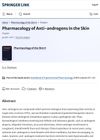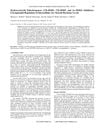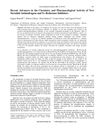The Antiandrogenic Action of 4-Androsten-3-One-17β-Carboxylic Acid and Its Methyl Ester on Hamster Flank Organ
April 1973
in “
Endocrinology
”
TLDR The chemicals 17βC and its methyl ester can block the effects of testosterone on hamster skin but not the effects of DHT.
In a study from 1973, 4-Androsten-3-one-17β-carboxylic acid (17βC) and its methyl ester were found to have antiandrogenic effects in the hamster flank organ, an androgen-dependent sebaceous structure. When female hamsters were topically treated with testosterone propionate, their flank organs enlarged and darkened, but this effect was completely blocked by the concurrent application of 17βC or its methyl ester. However, 17βC did not inhibit the action of 5α-dihydrotestosterone (DHT), another androgen that also caused enlargement of the flank organ. The study also showed that 17βC could inhibit the conversion of testosterone to DHT and androstane-3α,17β-diol (ADIOL) in homogenates of the flank organ. These findings suggest that 17βC, when applied topically, may be effective in treating conditions with excessive androgen activity, such as acne or seborrhea.


